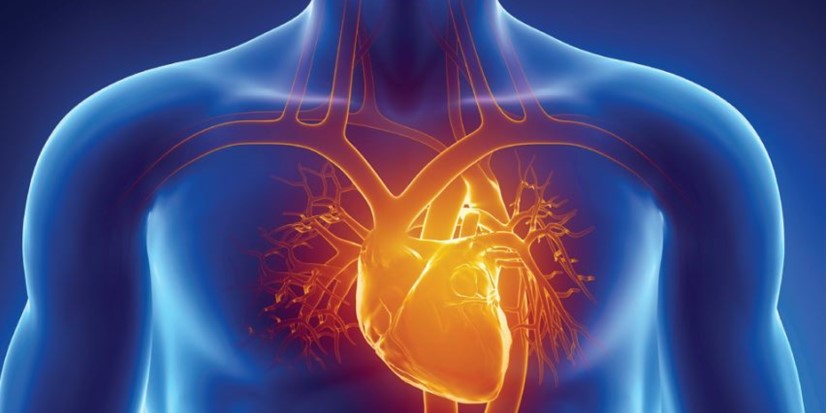Cardiology care nutrition guide: What to eat for a stronger heart
Cardiology care nutrition guide: What to eat for a stronger heart
Blog Article
Recognizing the Importance of Cardiology in Modern Healthcare Providers
Cardiology plays a vital duty in contemporary health care, particularly as cardiovascular disease remains to be the leading reason for death worldwide. Breakthroughs in diagnostics and therapy have actually transformed patient care, allowing earlier treatments and improved end results. The shift towards precautionary cardiology equips individuals to handle their wellness proactively. As technology proceeds to advance, the combination of cutting-edge solutions may better redefine cardiology's effect on public health, triggering a more detailed evaluation of emerging fads and their implications.
The Frequency of Heart Problem and Its Effect on Public Health
Heart condition stays the leading reason of fatality around the world, its influence prolongs much past private patients to affect public health systems and economic situations. The high occurrence of heart illness places a substantial pressure on healthcare sources, demanding increased financing for avoidance, treatment, and rehab programs. Public health campaigns should address threat elements such as weight problems, smoking cigarettes, and inactive way of livings, which contribute substantially to the increasing occurrence of heart conditions.Moreover, the financial concern linked with cardiovascular disease is enormous, including not only direct medical costs however also indirect costs connected to lost performance and early death. Communities deal with challenges in taking care of these costs, frequently resulting in variations in medical care gain access to and results. As the populace ages and lifestyle-related threats remain to rise, the seriousness for reliable cardiology interventions ends up being vital. Dealing with heart disease is not just a matter of individual wellness yet additionally an important public wellness top priority.
Advancements in Cardiac Diagnostics and Imaging Techniques
Recent improvements in heart diagnostics and imaging techniques have revolutionized the area of cardiology, enhancing the ability to discover and keep an eye on cardiovascular disease. Methods such as cardiac MRI, CT angiography, and echocardiography have actually come to be increasingly sophisticated, supplying in-depth photos of cardiac structures and functions. These methods permit the very early identification of problems like coronary artery condition, cardiac arrest, and valvular disorders.Moreover, developments in non-invasive diagnostics, such as wearable innovation and remote tracking tools, have equipped people and doctor. These tools help with real-time tracking of heart rhythms and other vital signs, leading to timely interventions. Additionally, expert system is being incorporated into imaging evaluation, enhancing precision and effectiveness in medical diagnosis.
Technologies in Therapy Choices for Heart Issues
Current developments in cardiology have actually led to significant technologies in treatment alternatives for heart conditions. These include innovative surgical techniques that improve step-by-step results and emerging medicines that offer new opportunities for treatment. As the field develops, these technologies play a vital duty in boosting client treatment and end results.
Advanced Surgical Techniques
Innovations in medical methods have transformed the landscape of cardiology, using brand-new expect clients with heart conditions. Minimally intrusive procedures, such as catheter-based treatments, have actually substantially lowered healing times and healthcare facility remains. Methods like robotic-assisted surgery boost precision, allowing doctors to navigate complicated anatomical structures with higher accuracy. Developments in imaging modern technology facilitate real-time visualization during treatments, improving results. Transcatheter aortic shutoff substitute (TAVR) exemplifies a breakthrough in treating aortic constriction, enabling valve replacement without open-heart surgical procedure. In addition, hybrid techniques that combine surgical and catheter-based methods offer customized options for different cardiac concerns. These advanced surgical methods not only enhance patient safety and security but likewise increase treatment options, emphasizing the critical function of development in modern-day cardiology techniques.
Arising Therapies and medicines
As the landscape of cardiology continues to develop, emerging medications and treatments play a critical function in boosting therapy options for heart conditions. Developments such as novel anticoagulants and advanced lipid-lowering representatives have changed the monitoring of cardio conditions, substantially decreasing patient morbidity and death. Additionally, the development of genetics treatments and regenerative medicine supplies appealing methods for treating problems previously considered irreparable. Scientific trials are continuously revealing the effectiveness of these treatments, pushing the boundaries of standard therapies. The combination of electronic health innovations assists in personalized medicine, enabling for tailored treatment plans based on hereditary and way of living variables. Collectively, these developments highlight the vibrant nature of cardiology, boosting client results and redefining requirements of treatment in contemporary medical care.
The Duty of Preventive Cardiology in Person Care
Precautionary cardiology plays a crucial duty in person treatment by concentrating on the recognition of threat variables that contribute to heart condition. Via way of living alteration strategies and very early discovery strategies, doctor can properly lower the occurrence of cardio events - Cardiology. This aggressive approach not just boosts person results however also promotes lasting health
Threat Element Recognition
While heart diseases continue to be a leading reason for morbidity and death worldwide, reliable risk variable recognition serves as a cornerstone of preventative cardiology. Recognizing danger variables such as high blood pressure, family members, hyperlipidemia, and diabetes mellitus background is vital for early treatment. Healthcare experts utilize different screening approaches to assess these variables, allowing for tailored safety nets. Furthermore, understanding an individual's lifestyle options, such as smoking and physical inactivity, better notifies risk evaluations. This thorough examination enables clinicians to create personalized care strategies targeted at mitigating dangers. By focusing on risk element recognition, healthcare systems can enhance individual outcomes and minimize the overall problem of heart diseases, eventually adding to boosted public wellness strategies and resource allowance.
Way Of Living Modification Techniques
A wide variety of researches highlights the crucial duty of lifestyle modification techniques in minimizing cardio condition threat. These strategies encompass dietary modifications, raised exercise, smoking cigarettes cessation, and weight management. By adopting a heart-healthy diet rich in fruits, vegetables, whole grains, and lean proteins, individuals can reduce cholesterol levels and blood pressure. Regular exercise strengthens the heart and improves total cardiovascular health. Additionally, giving up smoking cigarettes substantially reduces the threat of heart condition and enhances recovery rates for those with status quo. Weight monitoring additionally contributes to cardiovascular health by mitigating other threat variables such as diabetic issues and hypertension. Executing these lifestyle transforms not just advertises private well-being yet additionally works as a cornerstone of preventative cardiology in client care.
Early Discovery Methods
Lifestyle alterations considerably contribute to reducing cardio disease risks, yet they are most efficient when coupled with very early detection techniques. Preventative cardiology emphasizes the value of recognizing prospective heart issues prior to they escalate right into serious problems. Techniques such as blood stress monitoring, cholesterol testing, and progressed imaging modern technologies like echocardiograms play vital functions in evaluating cardiovascular health. Biomarkers and genetic screening likewise boost the precision of very early detection, permitting customized preventive approaches. Regular heart threat assessments encourage healthcare service providers to intervene proactively, possibly avoiding cardiac arrest and strokes (Cardiology care). By incorporating these early detection techniques into routine treatment, people can official website take advantage of timely way of living treatments and targeted treatments, inevitably enhancing and improving results high quality of life
Integrating Modern Technology Into Cardiology Practices
As developments in modern technology remain to reshape different areas, the assimilation of cutting-edge devices and systems right into cardiology techniques has come to be vital for improving person treatment and end results. Telemedicine systems allow cardiologists to monitor patients from another location, improving access to care while decreasing the concern on health care facilities. Wearable gadgets, such as smartwatches, allow constant heart price surveillance, alerting both patients and physicians to possible concerns in real-time. In addition, fabricated intelligence (AI) is being made use of to assess substantial quantities of heart information, assisting in early medical diagnosis and tailored therapy strategies. Advanced imaging methods, including 3D echocardiography, enhance visualization of heart structures, resulting in much more precise treatments. Digital health and wellness records (EHRs) streamline person info administration, guaranteeing that cardiologists have immediate accessibility to vital data. Together, these technical developments are transforming cardiology, promoting proactive monitoring and enhanced health end results for clients with cardio conditions.
The Relevance of Client Education And Learning and Engagement
Individual education and interaction play a crucial function in the monitoring of cardio wellness. By gearing up people with knowledge regarding their problems, treatment options, and way of life changes, doctor empower individuals to take an energetic duty in their care. This proactive technique can learn this here now bring about improved adherence to recommended drugs, nutritional changes, and exercise programs, eventually lowering the risk of complications.Engagement also promotes a solid patient-provider partnership, urging open communication and trust. When clients feel notified and included, they are extra likely to voice worries and ask inquiries, which can lead to better medical results. Furthermore, academic sources, such as workshops or electronic systems, can boost understanding and advertise self-management strategies. Overall, focusing on person education and learning and involvement is essential for boosting cardio wellness, boosting top quality of life, and minimizing health care expenses related to heart diseases.
Future Patterns in Cardiology and Their Prospective Impact

Regularly Asked Concerns
What Lifestyle Changes Can Lower Heart Disease Risk?
The existing concern addresses lifestyle adjustments that can considerably decrease cardiovascular disease threat. Cardiology. Taking on a balanced diet regimen, participating in regular physical task, preserving a healthy and balanced weight, handling stress, and staying clear of tobacco can especially boost cardiovascular wellness
Exactly How Can I Identify Early Indicators of Heart Issues?
Identifying early indicators of heart problems entails surveillance signs such as breast discomfort, shortness of breath, exhaustion, and irregular heart beat. Prompt awareness of these signs can prompt required clinical assessment and treatment for better results.
What Are the Distinctions In Between Cardiologists and Cardiac Surgeons?
The differences between cardiologists and cardiac doctors depend on their functions; cardiologists largely diagnose and handle heart conditions with non-invasive approaches, while cardiac specialists perform surgeries to remedy architectural heart issues. Each plays an important, unique duty.

How Often Should I Obtain My Heart Health And Wellness Checked?
The frequency of heart medical examination differs based on specific danger factors. Usually, adults should undertake assessments every one to 2 years, while those with existing problems may call for more constant assessments as recommended by healthcare specialists.
What Role Does Genes Play in Heart Disease Threat?
Genetics substantially influences heart problem danger, with domestic patterns indicating inherited conditions. Specific genes can incline individuals to high blood pressure, cholesterol issues, and other cardio problems, highlighting the value of genetic screening in evaluating heart health and wellness. Heart condition remains the leading reason of fatality worldwide, its influence extends far past individual patients to impact public wellness systems and economic climates. Public wellness initiatives need to resolve risk aspects such as excessive weight, smoking, and inactive way of livings, which add greatly to the increasing occurrence of heart conditions.Moreover, the financial concern connected with heart illness is tremendous, encompassing not only direct medical expenses however additionally indirect expenditures associated to shed productivity and premature death. Preventive cardiology plays a necessary duty in person care by focusing on the identification of risk factors that contribute to heart disease. Synthetic knowledge (AI) and device discovering are boosting diagnostics and person surveillance, enabling very early discovery of heart conditions. The distinctions in between cardiologists and heart cosmetic surgeons lie in their functions; cardiologists mainly manage and diagnose heart conditions with non-invasive techniques, while cardiac cosmetic surgeons visit this site carry out surgical procedures to fix structural heart concerns.
Report this page